
Hex Mayflies
Hexagenia limbata
The famous nocturnal Hex hatch of the Midwest (and a few other lucky locations) stirs to the surface mythically large brown trout that only touch streamers for the rest of the year.

— 4 small yellow spots on frons visible in photos
— Narrow occipital spinule row curves forward (but doesn’t quite meet on stem of ecdysial suture, as it's supposed to in this species)
— Short spinules on anterior margin of front legs
— Short rposterior row of blunt spinules on abdominal tergae, rather than elongated spinules dorsally
I caught several of these mature nymphs in the fishless, tiny headwaters of a creek high in the Wenatchee Mountains.

Male Cinygmula tarda Mayfly Spinner Pictures
I collected numerous spinners from a thick dusk mating swarm and spinner fall over the Cedar River on a cloudy evening at the end of June. Duns were emerging at the same time, so I was able to collect several male spinners as well as a female spinner, a male dun, and a female dun of the same species, whatever it is. The microscope pictures here come from a mix of those different males, but all the macro DSLR photos are of the same individual.
This one is difficult to identify, though I went into a lot of detail since I caught so many and their fall really got the fish rising for a while at dusk. The penes have a single set of lateral subapical spines, and the wings of the male spinner appear to be untinted, although there may be a barely-perceptible uniform yellow tint. The two claws at the end of each tarsus are similar to each other in shape. The wing is 7.5 mm long and the body is 7 mm long.
I think these are the possibilities:
1. The best guess is Cinygmula tarda, which is the only species matching the size of this specimen in Needham et al (1935). The rest of the description seems to fit pretty well. However, the picture of the genitalia in that source and the one Slater & Kondratieff (2004) differ somewhat from each other and from this specimen, which more closely fits the drawing for Cinygmula mimus.
2. My next guess would be Cinygmula tioga. The original description in Mayo (1952) fits remarkably well, and it's only reported to be 1 mm longer than this specimen (within the likely range of natural variation). It hasn't been reported yet from Washington, only California and Oregon, but the sites in north-central Oregon aren't implausibly far from west-central Washington. However, the drawing of the penes suggests that the lateral spine should be longer or located closer to the tip than in this specimen, and that species is also supposed to have yellow-tinged wings. There may be a very faint tinge to this specimen, but it's hard to tell.
3. It could be either a species not yet described or an undescribed variant of a current species.
And here's a quick list of why other local species were ruled out:
mimus — This species is the best match for the genitalia, but it's supposed to be much larger with a wing length of 10-11.5 mm, and it should have clearer tinting to the wings in a particular pattern. However, Mayo (1952) notes that mimus should not have tracheations on the tergites, as this one clearly does, which would make it fit tioga. I'm not sure where tarda falls on that characteristic. Also, Slater & Kondratieff (2004) describe the compound eyes of mimus as contiguous, which doesn't fit this specimen. This specimen also has dark mid-ventral markings on the sternites, which mimus should lack.
uniformis — wing length 10 mm, small ventral subapical spine on penes not present in this specimen,
reticulata — wing length 9 mm, has distinctive wing patterning definitely not present on this specimen.
par — wing length 9-10 mm, penes lack prominent lateral spines, generally shaped wrong, tarsal claws would be dissimilar in par
ramaleyi — wing length 10 mm, penes shape way off
gartrelli — wing length 10 mm, crossveins in costal half of forewing margined with brown (unlike this specimen), penes shape similar being in same group with mimus, but has an extra small spine not present in this specimen

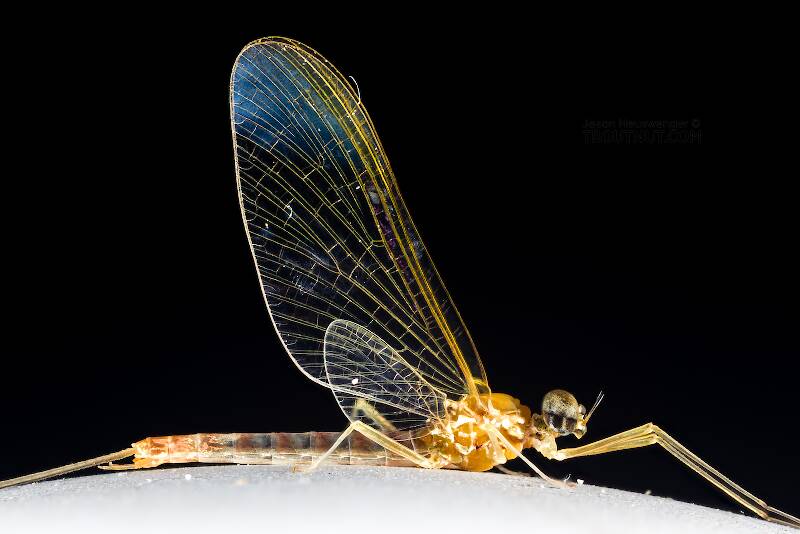
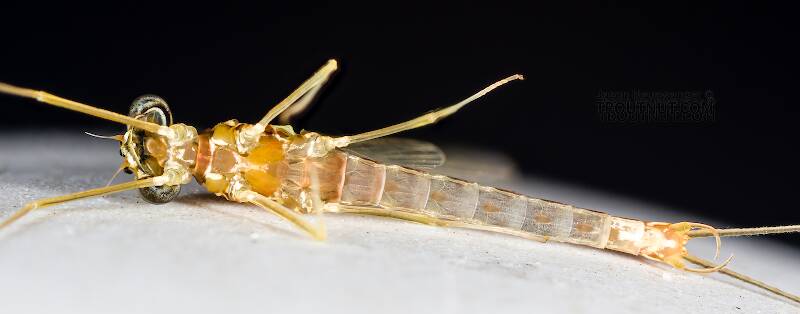
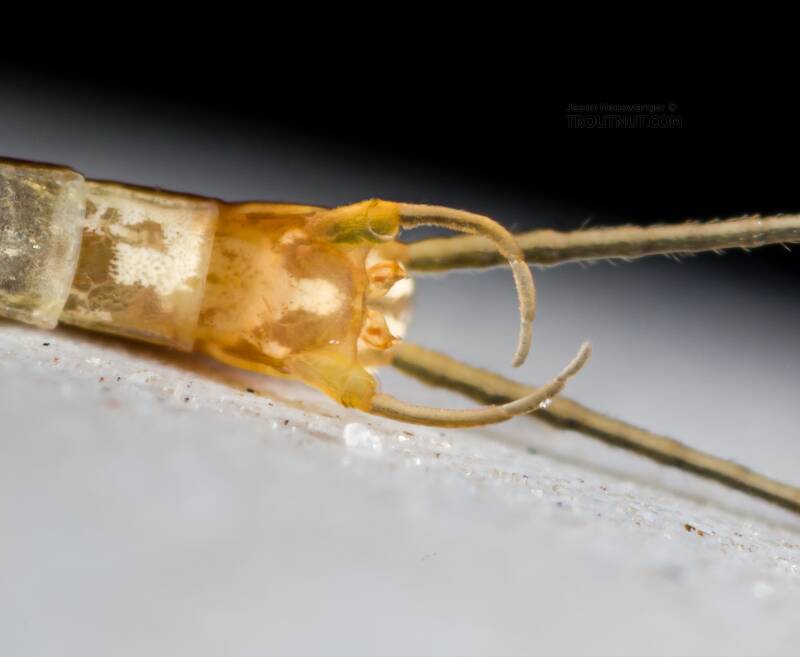
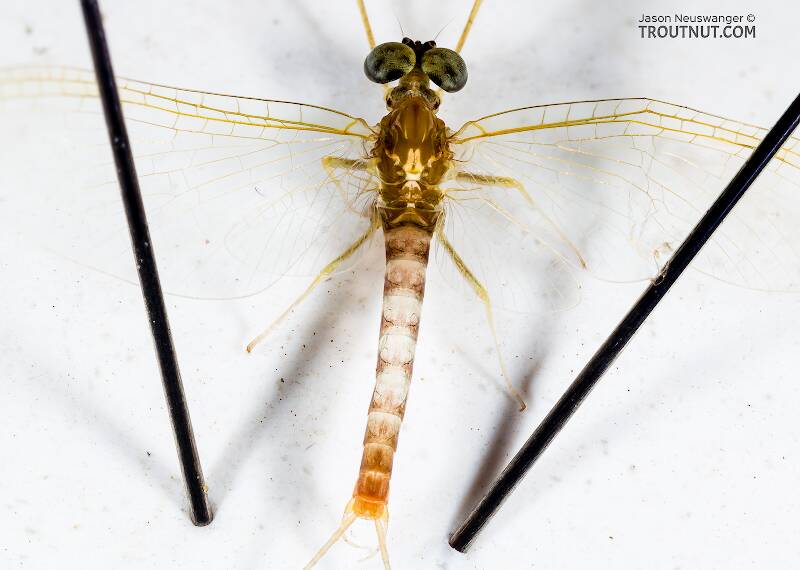
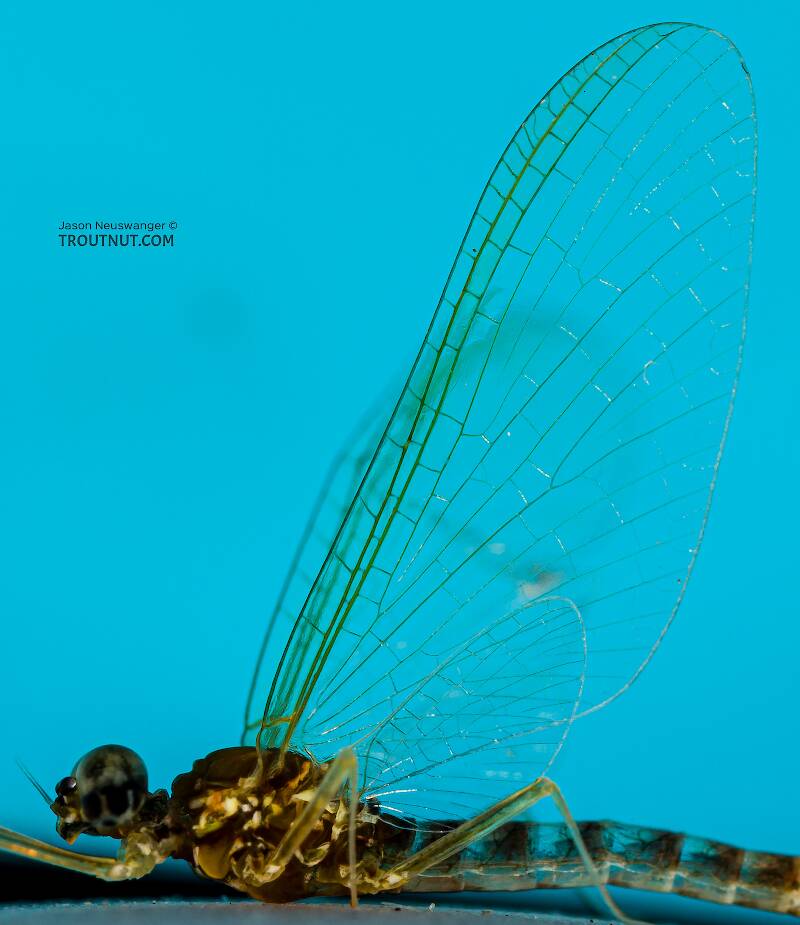
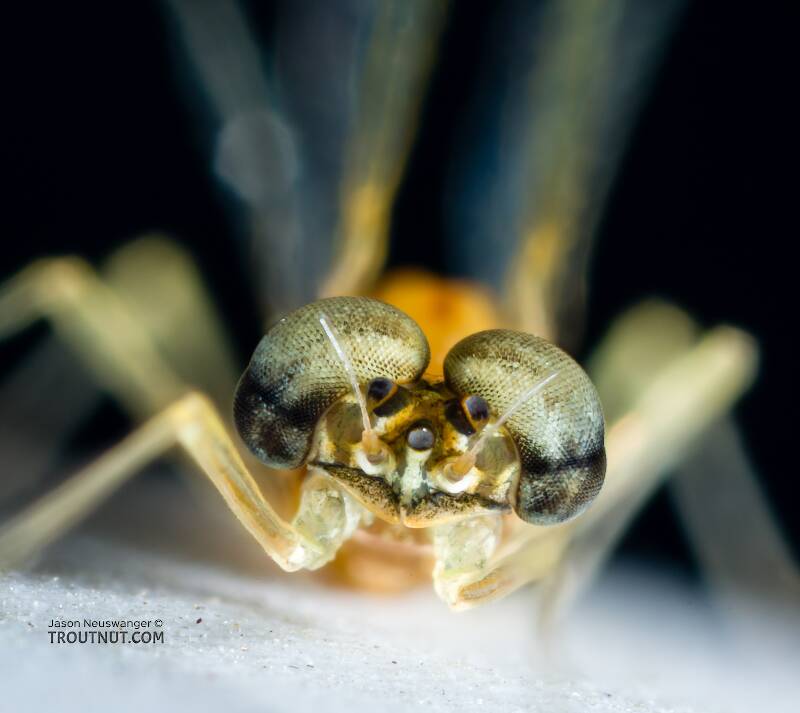
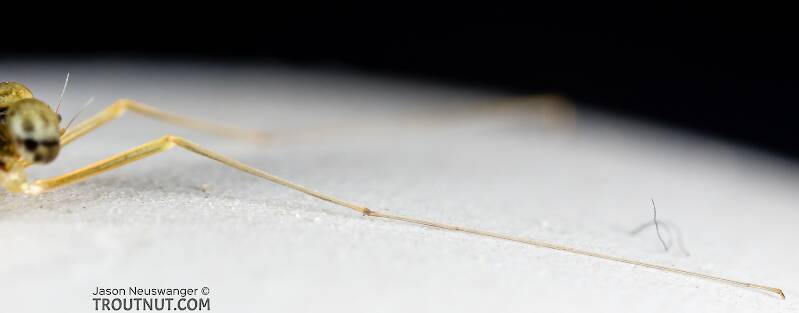
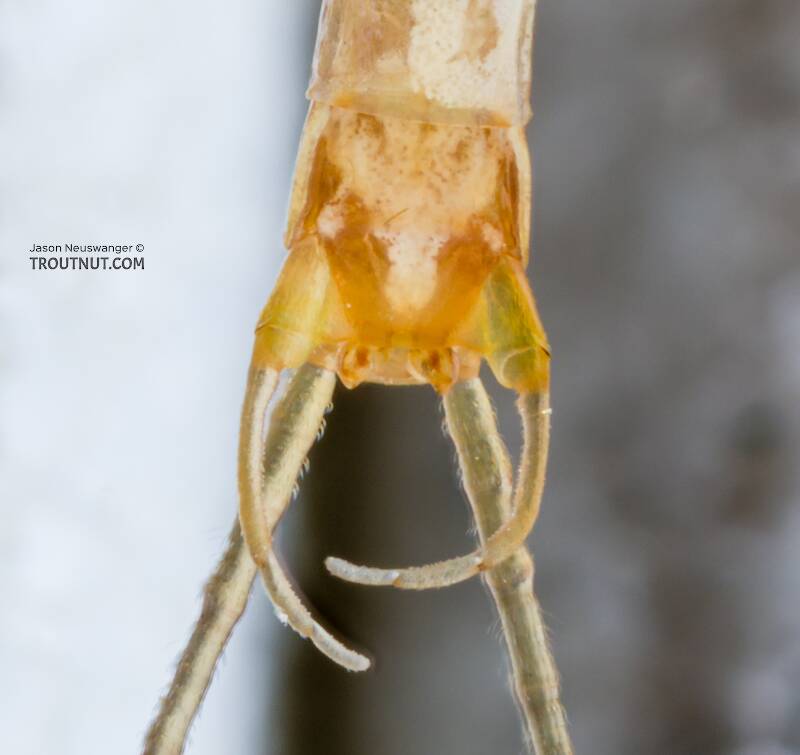
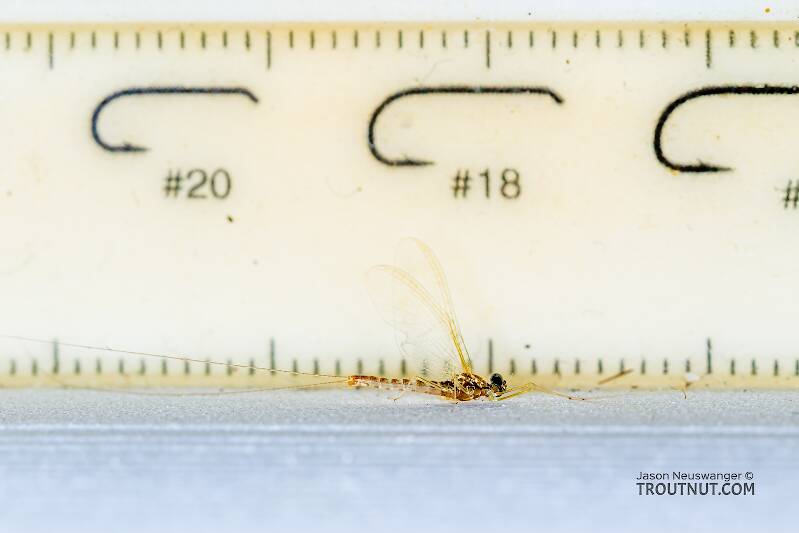
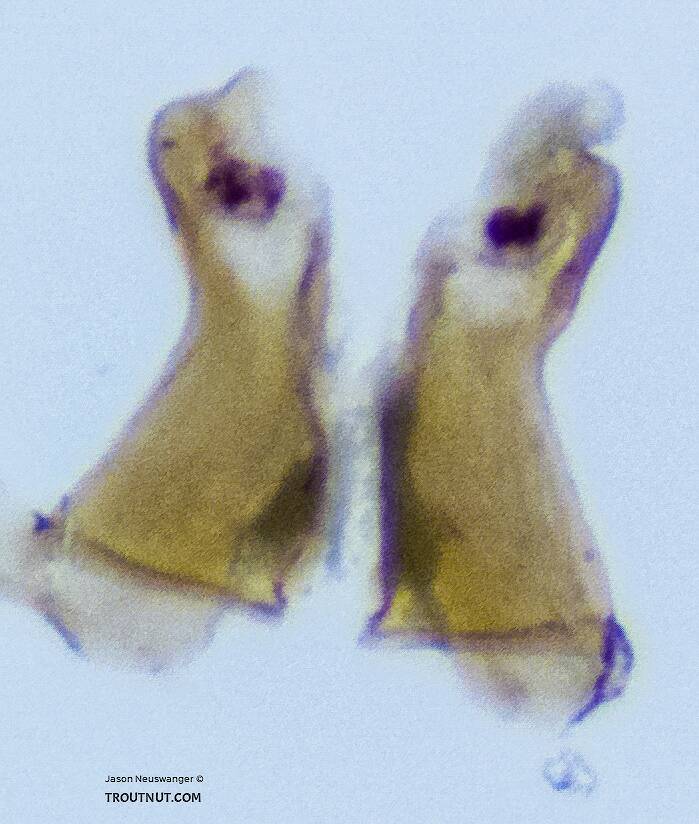
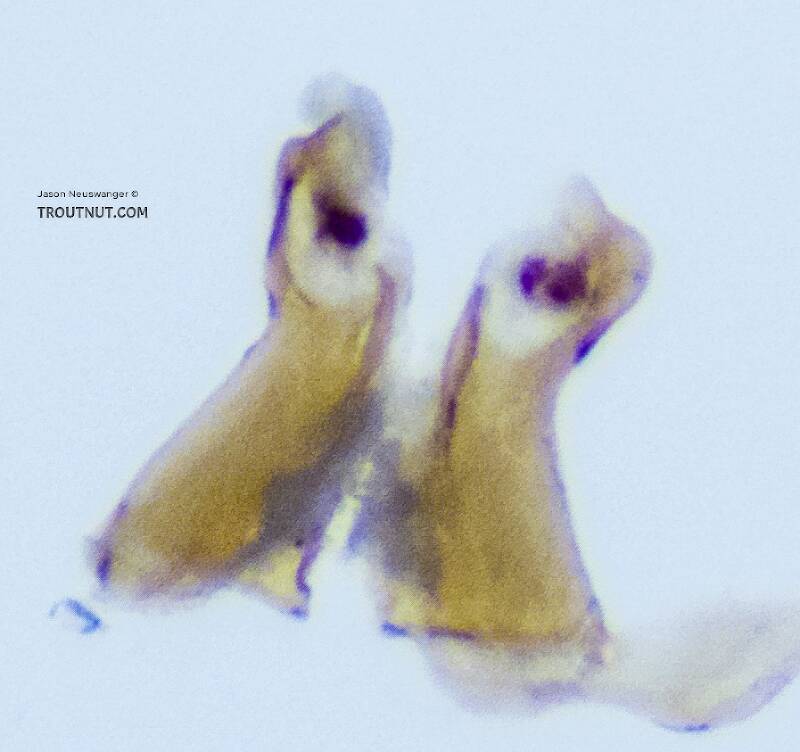
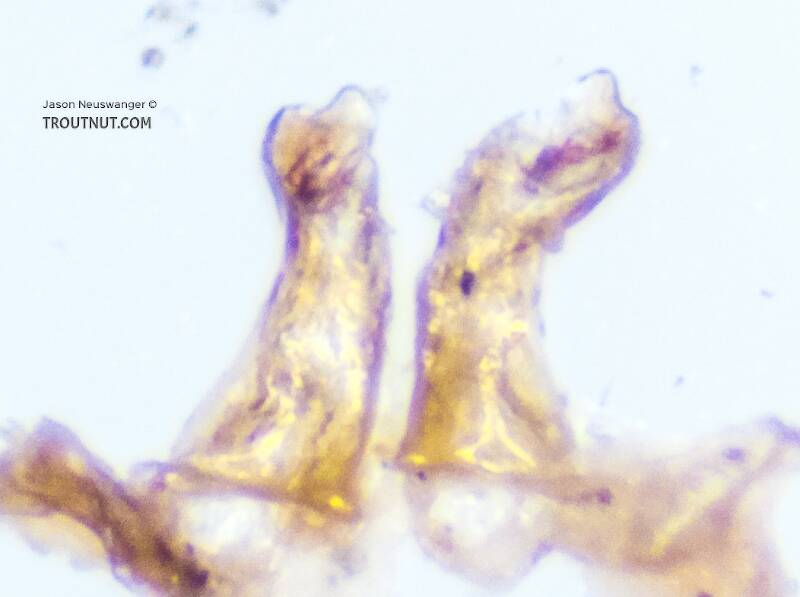
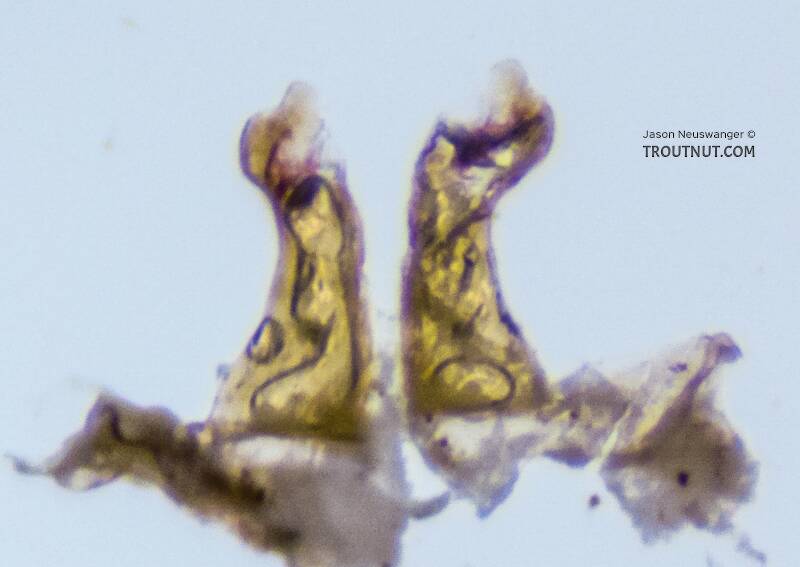

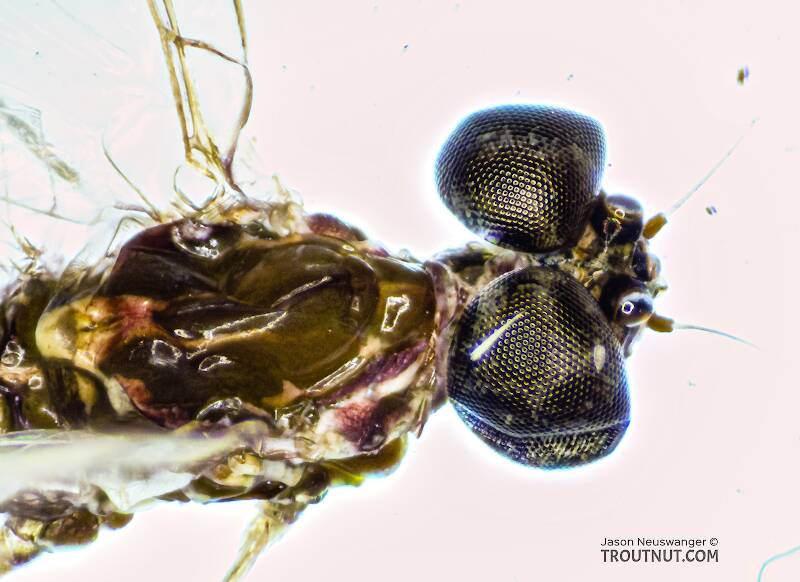
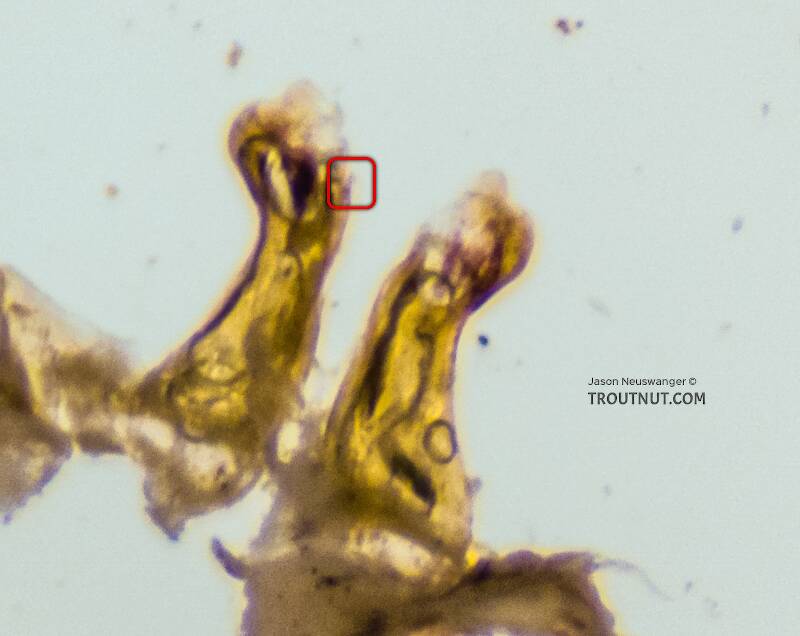
This mayfly was collected from the Cedar River in Washington on June 30th, 2021 and added to Troutnut.com by Troutnut on July 2nd, 2021.
Start a Discussion of Spinner
References
- Needham, James G., Jay R. Traver, and Yin-Chi Hsu. 1935. The Biology of Mayflies. Comstock Publishing Company, Inc.
Male Cinygmula tarda Mayfly Spinner Pictures
Collection details
Date: June 30th, 2021
Added to site: July 2nd, 2021
Author: Troutnut

